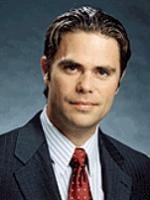In Patrick Engineering, Inc., Common Wealth Edison Company v Old Republic General Insurance Company, 2012 IL App (2d) 111111, the Illinois Court of Appeals issued an unpublished opinion dated July 20, 2012, restoring coverage to an additional insured pursuant to a separation-ofinsureds clause contained in the insured’s commercial general liability policy (“CGL Policy”). In reaching its opinion, the Illinois Court of Appeals reversed the trial court’s grant of summary judgment in favor of the insurer and held that a professional-services exclusion contained in the insured’s policy was not applicable to the additional insured that provided non-professional “labor” services. The court reasoned that the separation-of-insureds clause requires a separate and independent determination as to the applicability of the professional-services exclusion to the additional insured and named insured.
At issue in Old Republic was the interpretation of the CGL Policy and, in particular, the interplay among (i) the separation-of-insureds clause; (ii) the additional-insured endorsement; and (iii) the professional-services exclusion. The underlying claim arose out of a design services contract entered into between Common Wealth Edison Company (“ComEd”), the general contractor on the project, and Patrick Engineering, Inc. (“Patrick”) a design professional. Pursuant to the contract, Patrick designed the relocation of certain utility poles along South Main Street in Lombard, Illinois. While working on this relocation project, ComEd smashed through an underground sewer facility in at least four (4) separate locations causing significant damage to other property. In January 2010, the Village of Lombard initiated the underlying litigation against ComEd, alleging that ComEd acted negligently. In February 2010, ComEd tendered its defense to Old Republic, the insurer with which Patrick had procured the CGL Policy, requesting that Old Republic defend and indemnify ComEd in the underlying litigation. Importantly, ComEd was an additional insured under the CGL Policy’s additional-insured endorsement. Shortly thereafter, Patrick tendered to Old Republic the underlying litigation and requested that Old Republic defend and indemnify ComEd in the underlying litigation.
The parties all agreed that the CGL Policy covered general liability for damage arising out of non-professional or labor-based services, but not for damage arising out of professional services, as the CGL Policy contained a professional-services exclusion. The parties further agreed that Patrick, the named insured, provided only design professional services and was therefore, clearly barred from coverage. By contrast, ComEd, the additional insured, provided no professional services and merely provided labor on the project. In denying coverage, Old Republic argued, and the trial court agreed, that the CGL Policy’s professional services exclusion nevertheless barred coverage for ComEd. The professional-services exclusion stated that the insurance did not apply to property damage arising out of professional services provided by Patrick or any engineer who was either employed by Patrick or performing work on Patrick’s behalf. Old Republic argued that because the damage arose, even in part, out of Patrick’s professional services, and because the policy did not cover damage arising out of Patrick’s professional services, the professional-services exclusion barred ComEd from coverage. In response, the plaintiffs argued that the professional-services exclusive did not apply because the policy’s separation-of-insureds clause, which allowed for ComEd’s coverage to be determined independently of Patrick, restored coverage because ComEd did not provide any professional services. However, the lower court agreed with Old Republic and entered summary judgment against ComEd, claiming that it was “very, very clear that these activities were excluded” under the CLG Policy’s professional-services exclusion. On appeal, the plaintiffs reasoned that, once it was established that ComEd was an additional insured, the separation-of-insureds clause required that the applicability of the professional-services exclusion to ComEd be determined independently and separately. In other words, the plaintiffs argued that ComEd may rely on the “arising out of (Patrick’s) work” language in the additional-insured endorsement to claim status as an additional insured (even though Patrick’s work was professional), and then rely on the separation of insured’s clause to claim coverage for its own non-professional causal connection to the damage. Upon review of several federal and state court cases from Illinois, the Court of Appeals agreed with the plaintiffs and held that the professional-services exclusion did not apply.
Several important concepts can be taken away from the court’s decision. First, under a separation-of-insured’s clause, coverage available to an additional insured is determined independently from that of the named insured. In essence, the named insured and additional insured each have a distinct policy, subject to the liability limits of the policy. Second, the interplay between a separation-of-insureds clause and an additional-insured endorsement can restore coverage where coverage may not exist for the primary insured. For example, in this case, pursuant to the separation-of-insureds clause, the applicability of the professional-services exclusion to ComEd and Patrick was determined separately. Finally, for the purposes of construing the professional-services exclusion, the court recognized the possibility of multiple causes to the damage and held that the “arising out of” language in the additional-insured endorsement allowed ComEd to claim status as an additional insured. As a result, ComEd could rely upon a separation-of-insureds clause to claim coverage for its own causal role, even where the professional-services exclusion precluded coverage for the named insured.
Though this case is unpublished and does not carry precedential value, it reflects the lengths at which Illinois courts will find coverage in favor of additional insureds in the context of CGL Policies.




 />i
/>i

